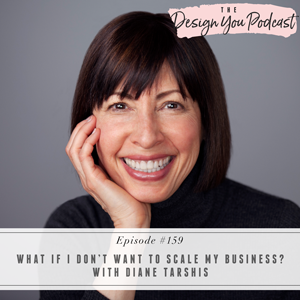
There are many buzzwords when it comes to business, and some that you may already be familiar with are growing and scaling. But do you know the difference between the two? Today’s guest has a different perspective from a lot of people on the concept of growing and scaling and joins us to talk about why she chose not to scale her own business.
Diane Tarshis is the Founder and Principal at Startup Distillery, a startup consultancy for businesses of all kinds. Diane combines her unique mix of finance, retail, manufacturing, and operations experience to help entrepreneurs across the world distill their ideas into profitable, growing businesses. She’s here today to talk all things business, and specifically, why scaling doesn’t have to be the ultimate goal in business.
Join us this week as we define what it truly means to grow and scale a business, and hear why Diane decided to keep her business small. We share some tips for growing your business without scaling and learn why more money isn’t always the ultimate goal, especially if it’s at the expense of other things. Get ready to get excited by what’s possible in your business, friends!
If you want help creating a business with thriving revenue streams so that you can design the life you really want this year, now is your chance! We’re going to be opening the doors to the Design You Coaching Program really soon, get on our waitlist now!





